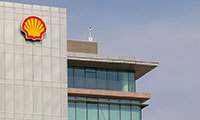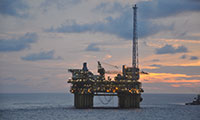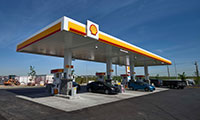Outlook
We continuously seek to improve our operating performance, with an emphasis on health, safety, security, environment and asset performance. In order to maximise sustainable free cash flows, we will also continue to manage operating expenses, capital investment, divestments and delivery of new projects.
- We maintain a “lower forever” mindset in our cost management, with an outlook of less than $38 billion a year for operating expenses until 2020, assuming no portfolio impacts or other external effects.
- Our organic capital investment outlook remains between $25 billion and $30 billion a year until 2020. We see $30 billion as a ceiling, as we reduce debt and meet our goals for shareholder distributions. We may go below the $25 billion level, if warranted by oil prices. The final outcome in any given year will be determined by the pace of development and overall affordability considerations. For 2018, we expect to maintain capital investment in the lower part of this range.
- We will continue delivering our 2016-18 divestment programme of $30 billion. This is a strategic value-driven, not a time-driven, programme and an integral element of Shell’s portfolio improvement plan. We believe we have already significantly high-graded our portfolio and will continue with an annual average outlook of at least $5 billion of divestments over the period 2019 to 2020.
- We remain on track to deliver new projects particularly in Brazil, the USA and Australia between 2014 and 2018, which we believe will add 1 million barrels of oil equivalent a day, or $10 billion of cash flow from operations at $60 per barrel by 2018. New project start-ups and ramp-ups are expected to generate an additional $5 billion cash flow from operations by 2020, assuming $60 per barrel real terms 2016 and mid-cycle Downstream industry conditions. We will remain highly selective on new investment decisions throughout 2018 and beyond.
We fully support the Paris Agreement and its goal of keeping the rise in global temperatures below two degrees Celsius. After having carefully listened to our critics, supporters and shareholders, in step with society’s drive to align with the Paris Agreement, we have set a long-term ambition to reduce the net carbon footprint of our energy products, measured in grams of carbon-dioxide equivalent per megajoule consumed, by around 20% by 2035 and by around 50% by 2050. This demonstrates leadership in the industry climate change debate.
Our drive to create a world-class investment case means that, around the end of this decade, we expect to deliver higher, more predictable returns and growing free cash flow. At the same time, we intend to reduce our debt, which increased as a result of the acquisition of BG. Subject to such progress and a recovery in oil prices, we intend to undertake a share-buyback programme of at least $25 billion in 2017-20.
We see the potential for free cash flow, plus proceeds from sale of interests in Shell Midstream Partners, L.P., to reach $30-35 billion, with return on average capital employed of around 10%, by the end of the decade, assuming $60 oil prices (2016 real terms). This potential represents a substantial transformation in the company over the next few years.
 Our businesses and organisation
Our businesses and organisation
 Financial data
Financial data
 Projects
Projects
 Outlook
Outlook